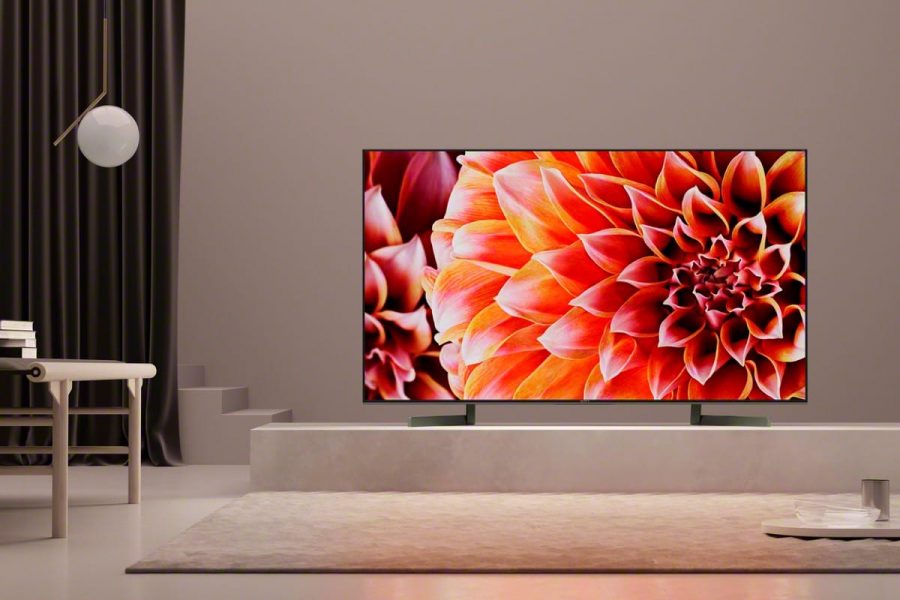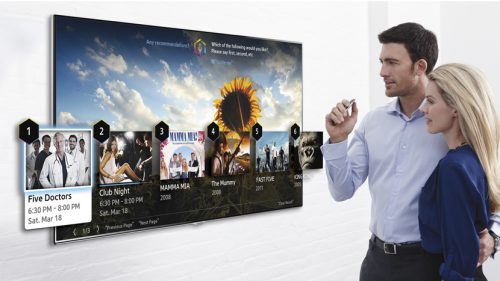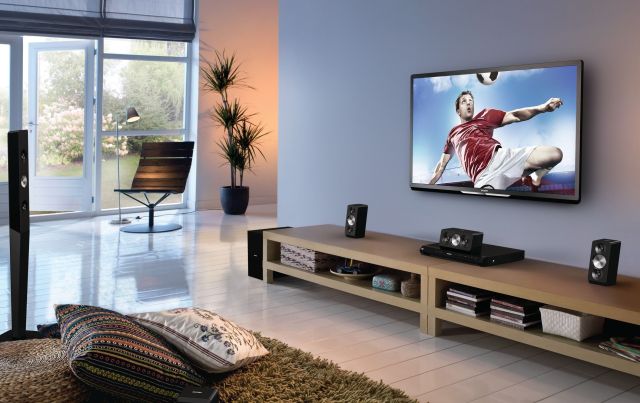Despite the rampant invasion of online technology, watching satellite and cable channels with all the annoying ads is still a popular type of free time. The equipment is being sold, new types, types, formats appear, so it is important to know what to look for when buying a TV. A model can look wonderful in a store or at an exhibition stand. But this does not mean that all its indicators need not be considered, so to speak, with a magnifying glass.

Content
Still buying junk?
A modern TV has not actually changed since the moment the idea of imaging using a liquid crystal matrix was realized. Over time, components were improved, components were minimized, and technical indicators improved.
Today, users are forced to pay a hundred dollars for one added LED and a couple of blocks of code, and it does not matter if he needs them or not. Buying a modern TV can be described as an example.
You need a pickup truck to carry potatoes. Arriving at the salon, the buyer discovers a car in which there are three rows of armchairs, a gypsy orchestra with a pair of bears is sitting in the back, there is a lift for wheelchairs, places for children, a mask with oxygen, some bag with something lies in the passenger’s place, which periodically requires attention. And everything is sold in the kit, and the truck itself is so-so.
The user is “crammed” for his money with software functionality that, in principle, he will never need. Therefore, you need to know what to pay attention to and evaluate what technical capabilities may be required for comfortable use of the device, and pay a much lower price, often getting the best TV that perfectly meets your needs.
Basic specifications
First of all, you need to evaluate the image quality on the TV. This can be done both by technical indicators given in the documentation for the model, and empirically.

Screen size
Choose a diagonal should be a simple formula. Estimates the distance from the viewing location to the screen. The resulting number in centimeters is multiplied by 0.54. Dividing the result by 2.54 and rounding to a large margin, we get the size of the TV, which will be comfortable to watch.
Resolution
The physical resolution of the matrix is responsible for the formation of a detailed picture. It also plays a role from which source the signal will come from. If we are talking about CD players or BlueRay, you should choose an HD-Ready TV (resolution 1366x768) with a relatively small screen or FullHD (1920 × 1080) for a model with a diagonal of 40 inches or higher.
We should also mention the modern standard UltraHD 4K. These are the newest models, very expensive, the resolution of the matrix is 3840x2160. Before reaching for the wallet, after listening to the consultant’s speeches and enjoying the demo pictures, it’s worth considering a simple fact: movies, broadcasts, any multimedia content of such quality are very few and the TV’s capabilities cannot be used to the full.
Brightness and contrast
Two of these parameters are directly responsible for viewing comfort under different lighting conditions, as well as for the formation of a clear picture. The minimum brightness parameter should be 450 cd / sq.m, and the higher the indicator, the better. The contrast level is responsible for color accuracy and clarity of the picture. The value of the parameter should be at least 600: 1, the rule "the more the better" - it works.
Choosing a TV for technical indicators of brightness and contrast is also worth careful.As the values approach the maximum possible, the price rises very strongly. Therefore, you need to approach the issue correctly. If the room where the TV will be standing is brightly lit by the sun, the choice is leaning towards the model with high brightness and contrast, and if the room is darkened, a TV with average indicators will do.

Viewing angles
The main feature that a TV should have is the convenience of viewing from anywhere in the room. But in fact, color deviations and a sharp drop in brightness are already observed within 15-20 degrees from the values declared by the manufacturer. Therefore, in the first place in the list of desires, you need to put on TVs, the viewing angle of which is not less than 170. Today you can easily buy a model with the declared area of 176 and even 178 degrees.
Reaction rate and matrix type
The human eye is inertial. Medical studies have long established that a simple physical reaction to a change in color or level of illumination along with the transmission of nerve impulses lasts approximately 4 ms. Knowing this fact will help you choose the type of matrix TV. Typical characteristics of engineering solutions are as follows (we give indicators close to the maximum):
- TN-Film is the most common type of matrix, characterized by coverage of an incomplete color spectrum, and a reaction rate of about 5 ms. Acceptable in the context of the price of finished products (TVs), however, the image quality greatly depends on the type of backlight used;
- IPS matrices are close to ideal in transmitting colors, the reaction speed can be 1 ms, manufacturers of TVs with such a screen will neutralize the problems arising from the backlight. Models are expectedly expensive, but the image quality is very good.
The slow reaction rate of the matrix (8, 10, 12 ms) leads to the following: with a sharp change in the image (frames), the display does not have time to form distinct color points. The picture is blurry, this is especially noticeable in dynamic scenes, small details are very blurred, in the most severe cases the brightness even drops. Reaction rate data is exactly what you need to pay attention to when buying a TV of any class.
Backlight type
The thinnest TVs are not always the best. The following types of backlight systems are distinguished:
- DirectLed, when the entire plane of the matrix is lit evenly;
- EdgeLed, in which the LED blocks are located around the perimeter. Televisions of the latter type are thin, but the screen area is unevenly lit.
The overall luminous flux from the EdgeLed screen is less compared to DirectLed models, which have a brighter image, but the device itself is more bulky. We should also mention OLED technology, where each pixel has its own light source. These are expensive TV models, however, their picture is amazing.

The technical specifications and indicators directly correspond to how comfortable the TV will be. The rest can be evaluated empirically, and in many respects - by applied engineering solutions.
Sound
Modern TVs cannot boast of full-fledged speakers with good membrane travel. The power indicated by the manufacturer does not say anything about volume or sound quality. Therefore, it is worth empirically evaluating each model. For example, ask the seller to "play with the remote control." Do wheezing appear at higher volume levels, does the model sound distinctly at low levels, are bass and high frequencies reproduced, how reliable is the sound picture.
Another evaluation criterion is the presence of simple connection interfaces. Headphones are still the most common way to watch programs without disturbing others. Therefore, a model that does not offer a standard 3.5 mm jack, which can also connect any type of external speakers, is a little disabled.
Connection ports
All modern models, without exception, have cable entry, an HDMI port. The rest set should be selected based on a possible set of signal reproduction equipment.SCART, analog audio-video, digital audio, S-Video, D-Sub VGA for the computer may be required.
You can give advice: HDMI ports should be at least two, and better - three. Then a disc player, a computer, a device for expanding the functionality or a set-top box for watching digital TV will be connected to the TV. The USB port is also very useful.
Digital features
If you do not need a SmartTV, the functionality of which is easily replaced by a small additional device, you can buy a model with wide capabilities for working with digital data sources. Among the many obscure terms you will meet:
- audio and video decoding;
- DNLA technology;
- PCMCIA card support.
In short, with such equipment, a television can:
- through the USB port to work with flash drives, external drives - it is convenient to watch movies;
- DNLA will allow the device to become part of the local network, gain access to computers and receive from there both IPTV broadcasts, films, Internet content and so on;
- PCMCIA cards expand the functionality. There are add-ons that work with unique ports and signal sources, receivers for direct connection of satellite dishes, WiFi adapters.
With just three technologies, which today are considered almost basic, a TV can become a low-cost solution that, in terms of useful functions, approaches the expensive SmartTV models.
3D or not?
3D technology, which is used in televisions, is a passive type. Roughly speaking, the image for each eye is transmitted in one frame, interlaced. Polarizing glasses separate the pictures, however, the overall image brightness decreases. In order to qualitatively display a three-dimensional video sequence, you need the appropriate signal: special discs or broadcast.
TV manufacturers say that the built-in program code can turn any movie into 3D. But in practice this is not so. If you really need 3D, there are appropriate discs or a signal source, then you should pay attention to Samsung products - the brand has its own imaging technology with good contrast and brightness. If interest is doubtful, you should not spend money.
Conclusion
Many of the wonders of marketing and advertising are easily discarded if you evaluate the usefulness of one or another TV functionality. You can make a simple SmartTV model using an inexpensive set-top box the size of a lighter; a curved screen is interesting only when the matrix larger than 40 inches is used as a monitor at a distance of half a meter from the head. 3D technology looks similar, for which special content is needed. Therefore, buy a TV, evaluating its performance, you should not buy a ton of unnecessary trash just like that, in addition.